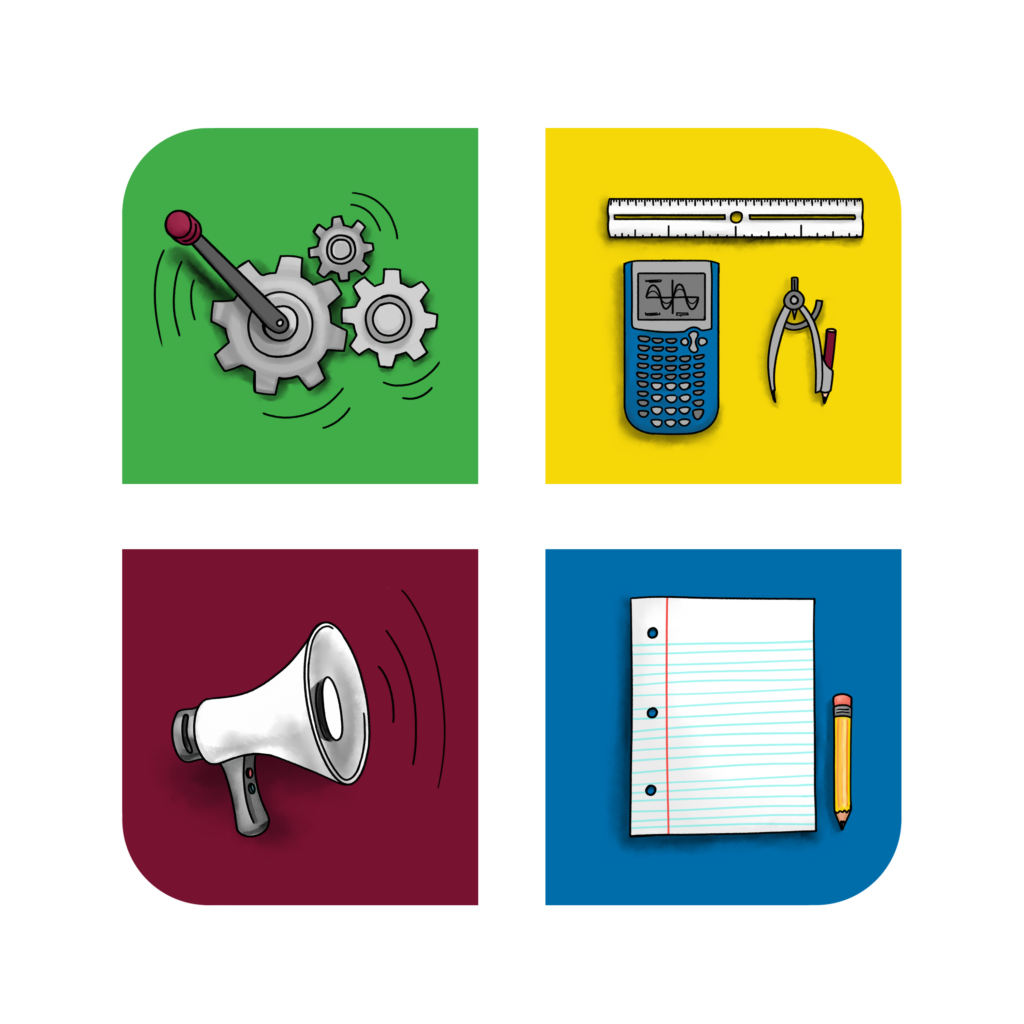Taylor Clements, Louisville, KY
As technology continues to pervade all levels of our lives, new possibilities for communication consistently materialize. Think about the impressive number of apps and resources our students use to communicate: Twitter, Snapchat, and “old-fashioned” texting just to name a few. In this brief, I want to share some ideas on how to utilize these tools as teachers to improve teaching and learning. I am not discussing the practicality of using these tools with students, although there is a space for that, but rather the possibilities in using these tools with your professional learning community (PLC).
As a member of the Teacher Redesign Corps (TRC) 3.0, a group that met in Sacramento, CA this summer, I was part of a discussion regarding the grease that helps team members communicate and work together effectively. CPM project manager Mark Coté, was using the term to conceptualize the seemingly off-task chatter that naturally develops when working well with peers. We have all seen and heard this off-task chatter and many might be troubled by it and many may try to limit it as much as possible. This same phenomenon of grease should develop in functioning PLCs as well.
The term “backchannel” is used to define conversations and discussions that take place simultaneously with, but separate from, the normal flow of work discussions. The idea has nothing to do with technology – exchanging glances with a colleague in a faculty meaning or scribbling notes back and forth during a movie are examples of backchanneling. As teachers, we do not have many opportunities to develop backchanneling in person, so the technological tools available to us can play a role.
The use of backchanneling is beneficial to developing relationships and a healthy collegial flow within your PLC. The discussions do not need to be math-related. In fact, topics can be about anything, especially personal things. Just sharing stories, pictures, and experiences provide grease that helps the culture of collaboration develop with your PLC members. If you have a smartphone, you likely do this with family members and friends already. Though many PLC members may already consider themselves “close” or “friendly” with their fellow members, there is a higher level of productivity and communication that might develop when a digital and asynchronous backchannel is used to support the face-to-face interactions. The beauty of using technology is that the backchannel discussions can be asynchronous, instant, and include multimedia.
If you are curious about why students cling to these social media tools so much, you might find the answer in using these tools with colleagues. We learn together. CPM’s pedagogical vision incorporates social learning theory. Many math teachers can embrace socialization on the teacher’s side of the classroom even more by using tools and opening a backchannel with PLC members. This may have profound personal realizations about how current students think, work together, and socialize while learning.
Some of the best tools to investigate with your colleagues include Voxer, Google Hangouts, Yammer, Remind, Twitter, group text messaging, Skype, and Snapchat. Whichever tools you use, do your best to involve all members of your PLC in group messages. If you find yourself sharing more, conversing more, and generally learning more with your PLC members, you will see that energy translate into your PLC work, and translate into improved teaching and learning in your department.
